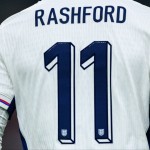WAKE up: it’s the summer of 1989 and Manchester United are thinking about paying a record fee for a defender. Alex Ferguson’s bruised team have just finished the First Division season in 11th place, below Millwall, and the gap to the top two seems insurmountable.
With weaknesses all over the pitch, the need to shore up central defence has been identified as urgent, even though United have ended the season having conceded fewer goals than the new champions Arsenal.
The deal for Gary Pallister, for it was the Middlesbrough man who Ferguson had identified, was eventually sealed in a rain-soaked pub car park just off the A1, whereas the club’s 2019 move for Harry Maguire is likely to be concluded in the soaked recesses of a heatwave not that near the A1, but there are similarities. Pallister famously played for England before he had featured in the country’s top-flight, while Maguire cut his teeth in League One with Sheffield United and the Championship with Hull and Wigan before emerging as one of England’s key figures in the 2018 World Cup.
The next Rio Ferdinand?
The next Phil Jones?@grahamruthven reckons a move to #MUFC could go one of two ways for Harry Maguire https://t.co/PC6gmt9fs2
— Unibet (@unibet) July 21, 2019
Here’s the thing: no-one in 1989 believed that Gary Pallister was the best defender in the world at that time. And no-one in 2019 believes that Harry Maguire is the best defender in the world right now, but that’s not how transfer fees work. The fact that Liverpool’s decision to buy Virgil van Dijk is somehow looking a bargain has surprised everyone, including, I’m afraid to say, you.
In the words of Ben Kingsley in All or Nothing, “City have inquired about Southampton central defender Virgil van Dijk but the price tag is proving an issue.” Yes, a transfer fee is a rating of scarcity and need rather than one of quality: sometimes big teams need to make big moves.
What Pallister did, admittedly after a slow start [cut to montage of David Oldfield], was bring some much-needed authority to Manchester United’s defence, and for all of Harry Maguire’s supposed weaknesses, he would bring a bustling charisma, a marauding joviality, to United’s careworn defence.
Two goals in his first Premier League campaign at Leicester in 2017-18 along with three more last season, gives him a goal threat few United central defenders have possessed in the Premier League era. Only Steve Bruce (with a combined total of seven goals in 1992-93 and 1993-94) and Nemanja Vidic (six across 2009-10 and 2010-11) have a two-season haul higher than the one Maguire has just posted.
1: John Barnes vs Ireland in 1990
2: Harry Maguire vs TunisiaThere's only one way to beat them
Get round the back pic.twitter.com/mTTLwlxLE3— Duncan Alexander (@oilysailor) June 18, 2018
And it’s not just going forwards that you can make a case for Maguire to be worth, if not a world record fee, then at least a decent amount of money. There weren’t many areas where Virgil van Dijk was outstripped in 2018-19 but he was second to Maguire in winning aerial challenges.
The Dutchman famously hasn’t been dribbled past in a Liverpool shirt for nearly 18 months, but it only happened six times to Maguire in 2018-19. The Leicester man made four mistakes leading to a goal or shot last season but van Dijk provided his own cast-iron howler away at Fulham. Clearly the Liverpool man is the better player as it stands, but it’s not a zero-sum game between him and Maguire. Is Maguire at £80m a bargain? No. Is he a bad footballer? Also no.
|
PL 2018-19 |
Aerial duels (min. 50) |
Aerial duel win % |
|
Harry Maguire |
151 |
78.1% |
|
Virgil van Dijk |
243 |
74.9% |
|
Shane Duffy |
259 |
72.6% |
There’s a robust amiability to the England defender that would echo an older era at Old Trafford, one that becomes ever more fondly remembered as each post-Ferguson season slides by. Pallister received more criticism than Eric Cantona from his manager after United’s infamous game at Crystal Palace in 1995, and, in the unlikely event that a current United forward goes rogue at Selhurst Park next May, would Maguire be able to perform the same role? You’d have to think he would.



